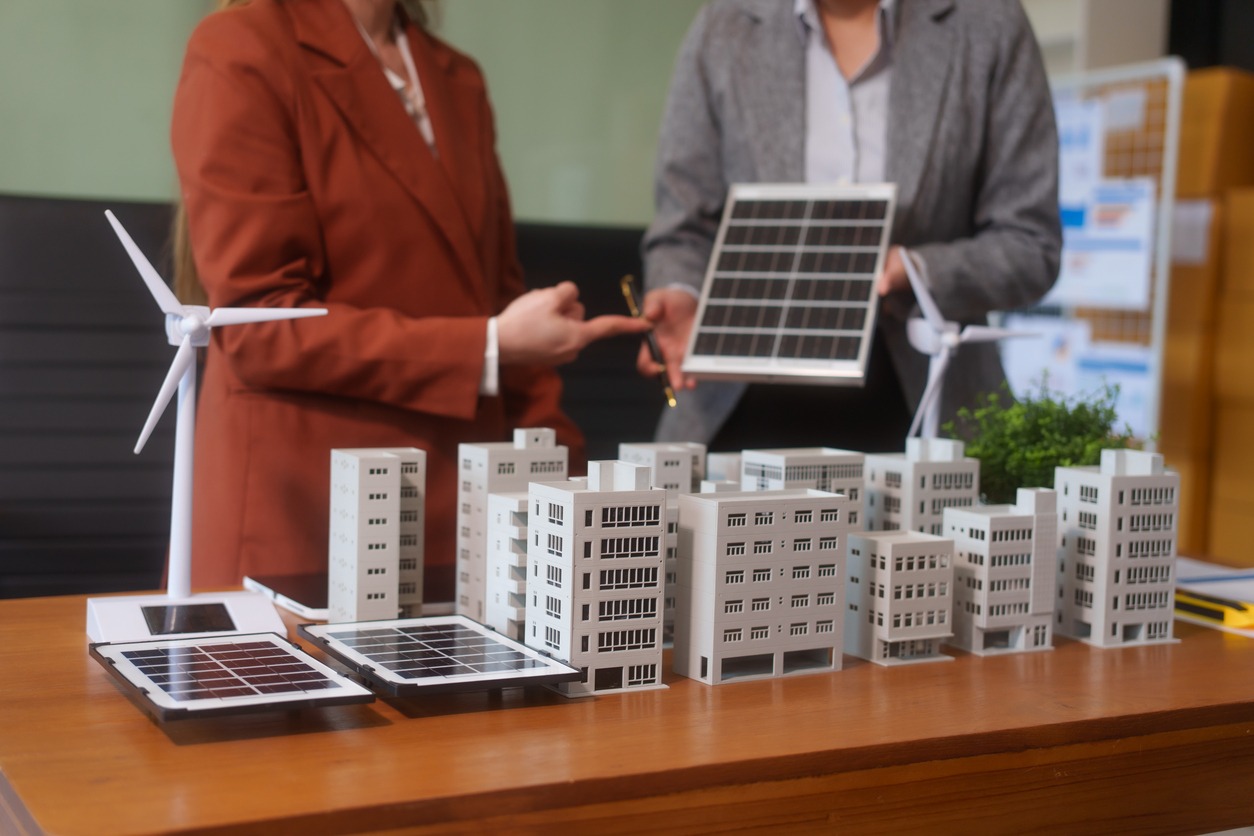As the world continues to innovate, energy demands are also increasing. Especially given the planet’s finite resources, cities are beginning to recognize the growing need for energy efficiency. One emerging solution is the creation of energy-positive cities, which could set the stage for a more sustainable future.
What Is an Energy-Positive City?
An energy-positive city is a self-sustaining, energy ecosystem. Rather than relying entirely on external power plants, it generates energy locally, primarily through renewable technologies, such as solar panels and wind turbines.
Officially known as Positive Energy Districts (PEDs), these areas are designed to generate more energy than they consume. They are part of the European Union’s strategy to achieve climate neutrality and resilience. Through renewable and energy-efficient sources and management, these places become valuable energy contributors with a more positive environmental impact.
The Energy Cost of the Modern World
Rapid urbanization and the growing digital economy have pushed global energy consumption to record highs. Every connected device, from your smartphone to your television, relies on a vast network of servers and infrastructure running 24/7. Data shows global energy consumption grew 2.2% in 2024, significantly faster than the 1.5% annual trend from 2010 to 2019.
Consider the data centers powering today’s digital and software environments. The rise of AI and machine learning has accelerated the demand for these facilities, which require precise cooling and climate control, backup systems and constant uptime. In 2024, data centers in the U.S. contributed to 4% of the country’s total energy consumption.
4 Pillars of PED Energy Systems
Energy-positive cities are built on four key pillars working together to balance supply, demand and sustainability:
- Energy efficiency: PEDs use energy-efficient appliances, fixtures and controls to reduce energy waste.
- Renewable sources: PEDs aim to meet 100% or more of their energy demand through renewable sources. Solar plants, wind farms and other renewable sources are crucial to ensure local generation covers daily needs.
- Energy flexibility: A flexible energy system can adapt to varying production capabilities, especially in less ideal weather conditions.
- Electric mobility: Through electric vehicles and corresponding infrastructure, transportation and mobility in PEDs become less dependent on fossil fuels and maximize available renewable energy.
The Blueprint for an Energy-Positive Future
Transforming cities into energy-positive districts requires data-driven strategies and cooperation across sectors, from government planners to your neighborhood.
Long-Term Planning
Building an energy-positive city requires a vision that stretches decades into the future. Complete reliance on renewable energy requires time and infrastructure, which can take years to develop and implement.
Local governments and urban planners must think beyond single projects and design integrated systems involving infrastructure, transportation and buildings, balancing short-term goals with long-term vision.
Linking Urban and Rural Communities
PEDs thrive when urban centers and rural areas function as one energy unit. Cities often have dense populations and high demand, while rural areas are the opposite, with lower demand and more open space to accommodate wind or solar farms.
Sharing resources between the two creates a sustainable and beneficial system where rural producers can generate revenue from excess power, while cities gain access to clean energy.
Funding Renewable Energy Initiatives
Financing can be one of the most significant obstacles to sustainability initiatives, such as energy-positive cities. Building PEDs requires up-front investment in renewable energy infrastructure, grid upgrades and storage options.
Governments can lead the way by offering tax incentives and subsidies for retrofitting older buildings. They can also directly fund research and construction on renewables like nuclear energy, solar and wind power. Private investors and corporations can also join through public-private partnerships or community-led energy cooperatives.
Engaging Local Stakeholders
New systems and innovations require public participation to truly take root. Residents, businesses and institutions must be part of the energy transition from the start. Citizen dialogues, energy-sharing programs and neighborhood projects are concrete ways to show citizens the benefits of this initiative and empower them to take ownership over the outcome.
From Concept to Reality
Energy-positive districts are already emerging across Europe. The EU-funded ATELIER Project brings together eight cities to build PEDs throughout the continent.
Amsterdam, Netherlands and Bilbao, Spain — so-called Lighthouse Cities — are leading the way in transforming their territories into PEDs. The cities are integrating energy-efficient buildings, electric vehicles and renewable power sources while accommodating residents’ needs and established structures.
Aside from these two cities, six more are poised to follow in their footsteps:
- Bratislava, Slovakia
- Budapest, Hungary
- Copenhagen, Denmark
- Krakow, Poland
- Matosinhos, Portugal
- Riga, Latvia
The ATELIER Project is already underway, showing the world the right policies, partnerships and planning can make energy-positive living a reality.
Power Beyond the Grid
The rise of energy-positive cities signals a significant shift in institutional priorities around energy use. Instead of expanding the grid, communities and urban planners are creating efficient power systems that generate clean energy, with the potential for self-sustainability. Energy-positive cities could redefine how humanity moves forward and powers innovation, moving from endless consumption to mindful contribution.
Source link
Jane Marsh biofriendlyplanet.com


